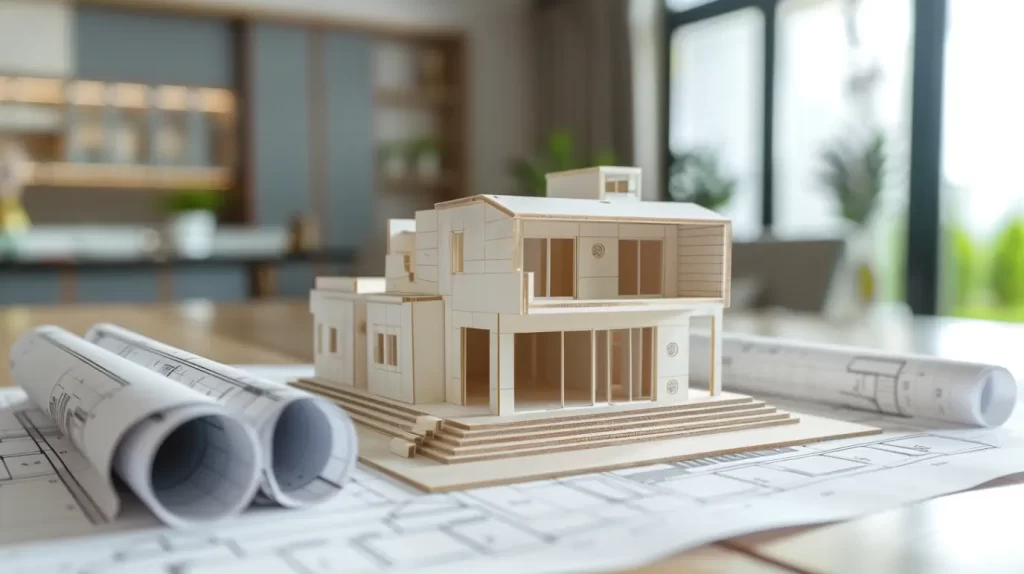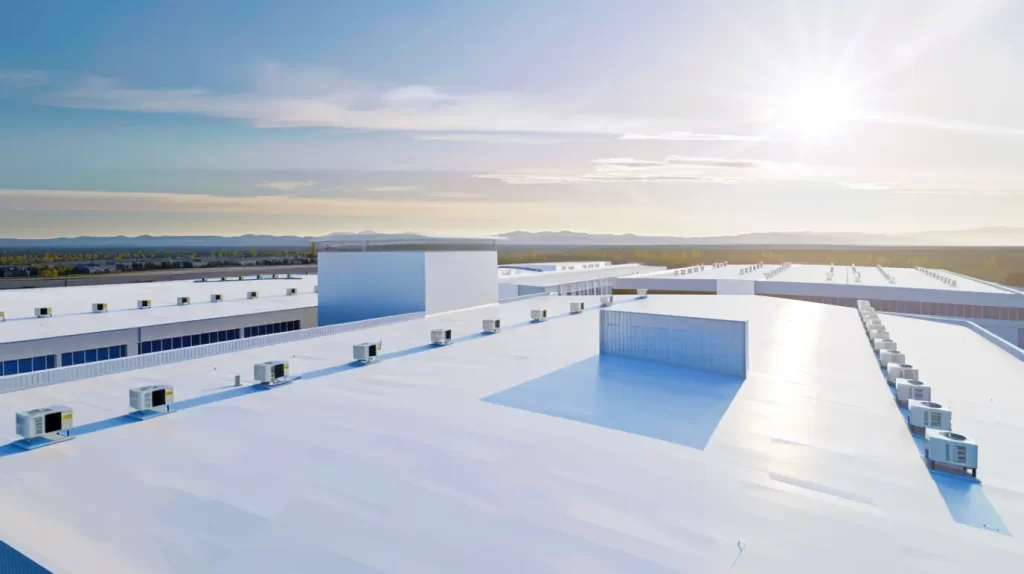Increasing energy efficiency is a top priority for property managers and HOAs maintaining multi-unit buildings in Anaheim, CA. High energy costs, especially during hot summer months, can strain building budgets and affect resident satisfaction. Fortunately, cool roofs have emerged as a smart, cost-effective solution, offering long-term energy savings and improved comfort. Companies like Fontaine Roofing in Anaheim, CA, specialize in installing these systems, ensuring that those responsible for apartments, condos, or mixed-use complexes can understand the benefits and mechanics of cool roof systems, leading to better decision-making and real financial advantages in energy management.
What Are Cool Roofs and How Do They Work?
Cool roofs reflect more sunlight and absorb less heat than traditional roofs. By using materials with high thermal emittance and reflective coatings, they keep surfaces cooler during peak sun exposure, reducing energy use in multi-unit buildings. Widespread adoption in urban areas can mitigate the urban heat island effect, leading to cooler neighborhoods and lower energy costs.
How do cool roofs reduce energy costs in multi-unit buildings? By minimizing heat absorption, they maintain steady indoor temperatures, lowering reliance on air conditioning. This leads to reduced energy bills and a stable environment, perfect for Anaheim’s sunny climate.
Contact Us
The Science Behind Cool Roofing Technology
Cool roofing is based on two principles: solar reflectance and thermal emittance. Solar reflectance measures a material’s ability to reflect sunlight rather than absorb heat. High-reflectance materials, like those in Fontaine Roofing systems, can be over 50°F cooler than dark roofs on sunny days.
Thermal emittance indicates how efficiently a roof releases absorbed heat. High-emittance roofs quickly shed heat, lowering internal temperatures. Optimizing both properties minimizes heat entry and cooling energy use.
Cool roofs keep multi-unit buildings cooler in summer by reflecting sunlight and emitting absorbed heat, reducing air conditioning needs—essential in Anaheim’s hot climate.
Key Differences: Cool Roofs vs. Traditional Roofs
Traditional dark roofs absorb solar radiation, often reaching temperatures over 150°F in summer. This heat transfers into buildings, straining HVAC systems and raising energy bills. In contrast, cool roofs reflect sunlight and efficiently emit heat, keeping surface temperatures lower.
Cool roofs significantly reduce energy costs in multi-unit buildings by preventing heat buildup and lowering cooling energy consumption, especially in large apartment complexes.
This leads to decreased energy use and mitigates urban heat island effects. By adopting cool roofing, property owners can lower monthly energy bills and enhance indoor comfort for residents.

Energy Savings for Multi-Unit Buildings in Anaheim
Property managers across Anaheim, CA are realizing the significant energy savings that come with cool roof technology. Thanks to Anaheim’s sunny climate zones, the reduction in energy use is particularly pronounced, leading to measurable drops in energy costs for multi-unit buildings. Many HOAs and building owners are seeing lower air conditioning expenses and improved energy efficiency throughout the year.
Looking ahead, understanding the annual cost reduction potential and the broader climate benefits can help property owners make an informed decision.
Annual Cost Reduction Potential for Property Owners
Installing a cool roof can yield substantial savings for multi-unit property owners by lowering cooling energy costs. Studies indicate that cool roofs can reduce overall building energy use by 14% to 26%, with cooling expenses dropping by over 20% in warmer areas. For instance, a 20-unit building could cut annual AC costs from $12,000 to $9,600, saving $2,400. Similarly, a 40-unit building may save $4,000, and a 60-unit building could save $6,400, showcasing the economic advantages of cool roofs.
Climate Impact: Keeping Buildings Cooler in Summer
Cool roofs not only lower energy bills—they have a transformative impact on urban heat levels and local climate zones. By reflecting the sun’s energy instead of absorbing it, cool roofs reduce the amount of heat radiated back into apartment complexes and urban neighborhoods. This helps decrease the urban heat island effect, leading to cooler, healthier communities.
How do cool roofs contribute to making urban neighborhoods more resilient to heat and climate change? They play a crucial role in lowering indoor and outdoor temperatures, reducing heat-related health risks, and boosting the overall comfort of residents. The effect compounds as more buildings in a neighborhood adopt cool roofs, resulting in less heat buildup citywide.
By making buildings more resilient to rising temperatures and climate extremes, cool roof systems support sustainable growth in Anaheim, CA.

Types of Cool Roofing Materials for Apartments & Condos
There’s a wide range of cool roofing materials available for new construction and renovations in multi-unit properties. Fontaine Roofing installs solutions tailored for apartments and condos, including high-quality reflective coatings, single-ply membranes, and advanced metal roofing with cool roof finishes. Each system is engineered to provide maximum durability and year-round energy savings.
Selecting the right material depends on building design, local climate, and energy goals—setting the stage for exploring top-rated roofing systems for large buildings.
Top-Rated Cool Roofing Systems for Large Buildings
Various roofing materials help reduce heat gain and enhance energy efficiency in large structures. Reflective coatings stand out for their high solar reflectance and thermal emittance, significantly lowering energy consumption and mitigating the urban heat island effect. Advanced membrane technologies also offer superior durability and reflectivity across urban climates.
Installing cool roofing systems ensures compliance with regulations while promoting sustainability in new construction. Building owners benefit from lower energy bills and reduced greenhouse gas emissions, fostering resilient communities. Selecting the right system leads to substantial economic advantages and improved air quality in urban areas.
Certifications and Partner Manufacturers
Leading manufacturers provide high-quality cool roofing solutions that enhance energy efficiency and reduce urban heat. As a GAF Master Elite Contractor and Certainteed Shingle Master, we offer reflective coatings to improve solar reflectance and lower thermal emittance. Recognized as TRI certified and members of CACM, CAI, and NRCA, we are committed to industry excellence. These partnerships prioritize sustainability, enabling property owners to achieve significant energy savings and lower greenhouse gas emissions. By choosing products from leaders like GAF, CertainTeed, and Polyglass—and our certifications as FiberTite approved applicators and IB Roofing Systems Authorized Applicators—building owners can invest in resilient, eco-friendly communities.
Get in Touch
In conclusion, investing in cool roofs for multi-unit buildings in Anaheim, CA can lead to significant energy savings and improved comfort for residents. By utilizing advanced roofing technologies, property owners not only reduce operational costs but also contribute to a healthier environment through urban heat island mitigation. With various options available, including top-rated systems from trusted manufacturers like GAF, Certainteed, and Polyglass, the potential benefits are substantial. If you’re ready to explore how cool roofs can transform your property management strategy and enhance energy efficiency, contact Fontaine Roofing today for a consultation.
Frequently Asked Questions
Can cool roofs be retrofitted onto existing multi-unit buildings?
Yes, cool roofs can be retrofitted onto most existing multi-unit buildings. The process usually involves applying reflective coatings or installing cool-rated membranes over current roofing materials. This retrofit quickly boosts energy savings and efficiency without requiring a full roof replacement.
What are the negatives of a cool roof?
Cool roofs require regular maintenance, such as occasional cleaning and inspections, to maintain high energy efficiency. Some roofing materials may need more frequent checks for mold or debris. However, overall environmental impact remains low compared to traditional options, making them a practical solution.

